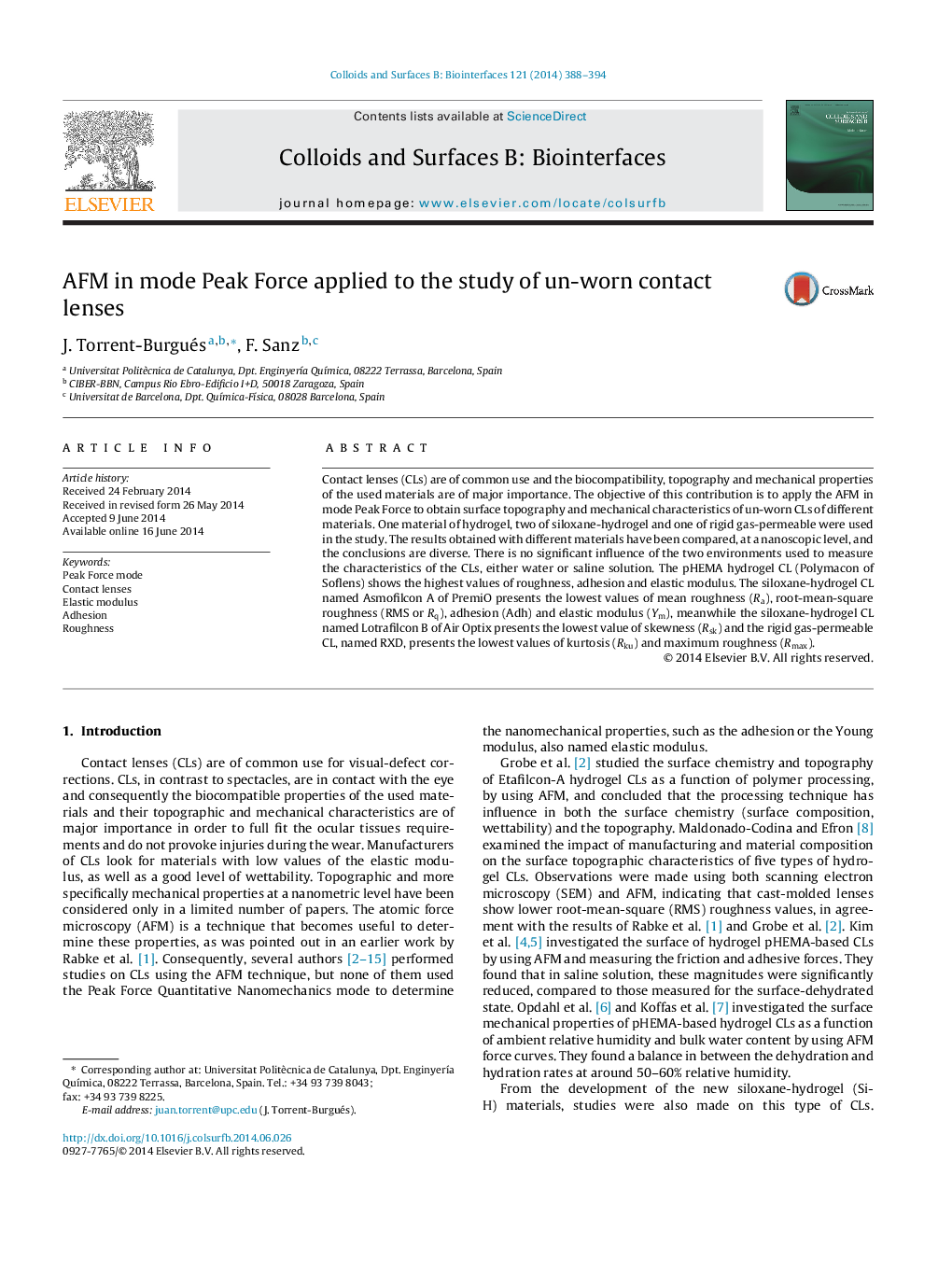| کد مقاله | کد نشریه | سال انتشار | مقاله انگلیسی | نسخه تمام متن |
|---|---|---|---|---|
| 599647 | 1454283 | 2014 | 7 صفحه PDF | دانلود رایگان |

• The Peak Force mode of AFM provides surface topography as well as nanomechanical properties.
• The hydrogel contact lens shows the highest values of surface roughness.
• The hydrogel contact lens shows the highest values of adhesion and elastic modulus.
• There is no significant influence of the environment, water or saline solution, on the measured properties.
Contact lenses (CLs) are of common use and the biocompatibility, topography and mechanical properties of the used materials are of major importance. The objective of this contribution is to apply the AFM in mode Peak Force to obtain surface topography and mechanical characteristics of un-worn CLs of different materials. One material of hydrogel, two of siloxane-hydrogel and one of rigid gas-permeable were used in the study. The results obtained with different materials have been compared, at a nanoscopic level, and the conclusions are diverse. There is no significant influence of the two environments used to measure the characteristics of the CLs, either water or saline solution. The pHEMA hydrogel CL (Polymacon of Soflens) shows the highest values of roughness, adhesion and elastic modulus. The siloxane-hydrogel CL named Asmofilcon A of PremiO presents the lowest values of mean roughness (Ra), root-mean-square roughness (RMS or Rq), adhesion (Adh) and elastic modulus (Ym), meanwhile the siloxane-hydrogel CL named Lotrafilcon B of Air Optix presents the lowest value of skewness (Rsk) and the rigid gas-permeable CL, named RXD, presents the lowest values of kurtosis (Rku) and maximum roughness (Rmax).
Figure optionsDownload as PowerPoint slide
Journal: Colloids and Surfaces B: Biointerfaces - Volume 121, 1 September 2014, Pages 388–394